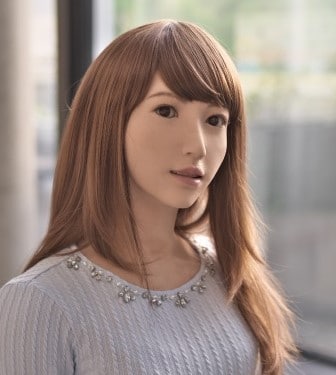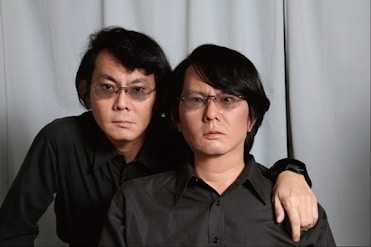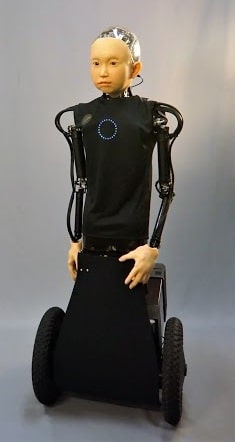
Views: 144
Japanese Android maker predicts that future robots will look like us
– Minapim by Hernan Valenzuela: In the 1980s the movie “Blade Runner” envisioned a neon-stained landscape of genetically engineered bionic replicants to resemble humans. The future humanoid robot has not materialized so far, but at a research institute in western Japan, Prof. Hiroshi Ishiguro is perfecting technology in several humanoid projects. Robots of the future can look and act like human beings and even become friends with them, Ishiguro and his team predict are highly intelligent, self-conscious and helpful at home.
“I don’t know when a future of ‘Blade Runner’ will happen, but I believe so,” said the University of Osaka professor.
Year by year in the laboratory of Prof. Ishiguro, new technologies such as deep learning are developed, improving the performance of pattern recognition. Current work involves intention and desire, and it is expected that when implemented in robots, they will become more humanlike.
Social robots are already widely used in Japan, from cooking noodles to helping physiotherapy patients. The first “cyborg-like” hybrid assisted robot (HAL) robot, helping wheelchair users to walk again using sensors connected to the unit’s control system, was developed by Tsukuba University and the Japanese company Cyberdyne. The social service robots will one day help us with the housework, from trash removal to the perfect slice of cheese or the best dinner.
The Prof. Ishiguro created an android copy of himself, using moving parts, electronic circuits, silicone skin and his own hair. Use the android to represent you on business trips. He hopes that recent advances in robotics and artificial intelligence will accelerate the synthesis of man and machine.
Awarded as one of the 100 greatest living geniuses by global consulting firm Synectics, Prof. Ishiguro does not agree with the Hollywood vision, where robots are destroyed and given an aggressive role against the man. In Japanese cartoons and animations, robots are always friendly.
Tesla’s Elon Musk also called for a global ban on killer robots, warning that technological advances could revolutionize the war and create new “weapons of terror” aimed at innocent people.
According to Prof Ishiguro there is no inherent danger in machines becoming conscious or surpassing human intelligence. “We need not fear AI or robots, the risk is controllable,” he said. “My basic idea is that there is no difference between humans and robots.” The goal is to “bring robots into society as human companions – robots may become our friends.” But will they look like us, as Ishiguro believes, and how comfortable will we be surrounded by autonomous humanoids?
The first attempt to create an android clone was based on his daughter, since he perfected the model, including a creation that claimed to be the world’s first news-reading android and a robot priest at a Kyoto temple presented earlier this year. year.
“Computers are already more powerful than humans in some cases,” he said. “Technology is just another means of evolution. We are changing the definition of what it is to be human. ”
The robot humanoid projects:
ERICA Humanoid
Autonomous conversational Android capable of natural interaction
ERICA is designed for a research platform for the autonomous conversation robot that can communicate with people in many ways, such as voice, body gestures, facial expressions, eye contact and touch. ERICA’s appearance is made of CG designed to have the features that beautiful people’s faces have. The voice is generated by the highest quality text-to-speech technology. Pneumatic actuators move your body smoothly with only a slight noise. The aim of the study is to conduct autonomous conversational androids that can interact naturally with people and get socially involved in everyday life.
Humanoid Geminoid

A teleoperated android that looks similar to the original person
For this research project, we use “Geminoids”, androids built to closely resemble specific human “models,” as a research platform for understanding humans; Our goal is to apply engineering methods, cognitive science and neuroscience to investigate various research topics. In addition, using a teleoperation system, we explore not only how people talking to the robot are affected, but also how the robot operator is affected. In this research, we developed Geminoid HI-2, modeled on Prof. Ishiguro, and Geminoid F, an android that closely resembles a specific female model. We are currently investigating an android’s ability to socially influence people.
CommU’s Multiple Robot Conversation

Social chat robot, providing conversational sense without voice recognition
Due to difficulties in automatic speech recognition, it is difficult for a robot to continue a coherent conversation with the user. In this study, we focus on a new approach that is to coordinate multiple robots in one conversation to prevent the conversation from collapsing due to these recognition failures. Through laboratory experiments and field tests, we reveal that the pre-scheduled shift behavior between multiple robots makes a caller feel that a conversation is coherent, regardless of faulty recognition results. We are trying to apply this cooperative use of various robots to information delivery systems in education, therapy, and advertising.
Humanoid Ibuki

“ibuki” is a children’s android equipped with a mobile unit. By acting with the human, talking together and, consequently, sharing his experience, it is expected that this robot will become a conversation robot capable of building a deeper relationship with the human. With regard to feasibility and safety aspects, a set of wheels is adopted as its mobile unit. The unit includes a pair of eccentricity wheels for horizontal body movement and a ball screw actuated actuator for vertical body movement. This replicates the movement of a human’s center of gravity position in the android robot and expresses a human-like movement, even with the wheels. In addition, having 47 degrees of freedom allows you to have various emotional expressions, such as hand gestures and signals, and different facial expressions.
HUMA

Upper body musculoskeletal robot powered by pneumatic actuators
The goal of this project is to realize that a robot works in a natural environment and interacts with people. HUMA is a research platform for studying physical-human interaction developed by the Center for Information and Neural Networks (CiNet) and the Intelligent Robotics Laboratory. This robot is a musculoskeletal robot powered by many redundant air cylinders. We proposed and implemented an actuator network (ANS) system consisting of multiple cylinders connected by multiple valves. The ANS can generate multiple responses by alternating the connections between cylinders using these valves. HUMA with an ANS can modify its physical interactions with the environment.
Source: Tsukuba University – Japan Times – Osaka University
Related article: Humanoid and animaloid robots for human comfort